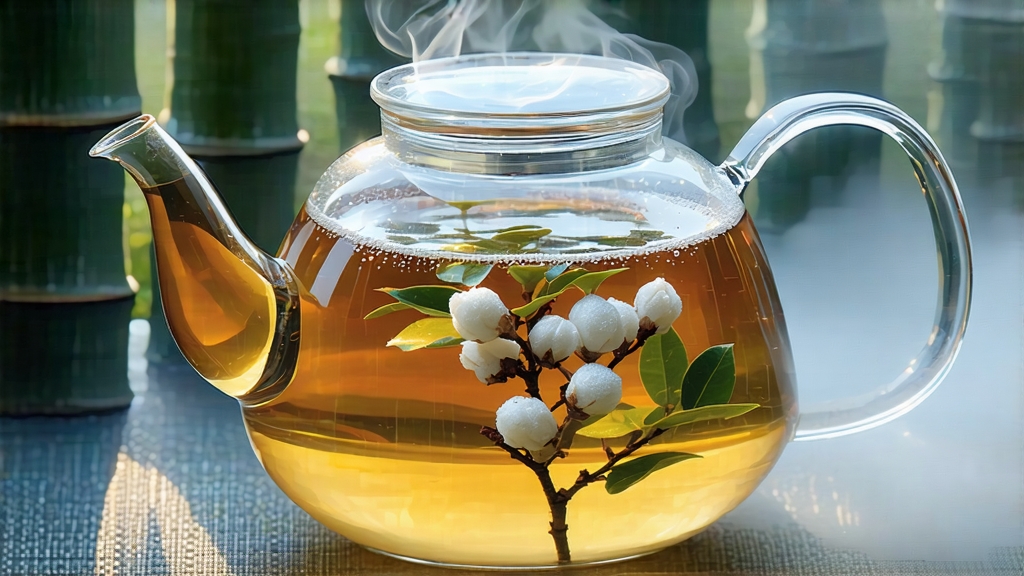
When the last winter star fades above the eastern ridges of Fujian, the tea gardens of Fuding and Zhenghe awaken under a veil of cool mountain mist. It is here, between the 15th of March and the 10th of April, that the most coveted expression of Chinese white tea—Bai Hao Yin Zhen, literally “White Hair Silver Needle”—is coaxed from the earth with the patience of centuries. To international drinkers accustomed to the verdant bite of green tea or the muscular richness of dark oolong, Silver Needle arrives as a quiet revelation: a liquor so pale it resembles early dawn light, yet a fragrance that lingers like the memory of pear blossom and warm hay. Understanding this tea is to understand the Chinese aesthetic of “hidden opulence,” where the greatest luxury is restraint.
History: from imperial tribute to minimalist icon
Although white tea as a category is mentioned in the Song Dynasty treatise “Da Guan Cha Lun” (1107 CE), Silver Needle itself steps clearly onto the historical stage only in the 1790s, when the Qianlong Emperor’s court recorded a “needle-shaped tribute tea with silvery fuzz” arriving from northern Fujian. The buds were so delicate that magistrates transported them in small bamboo cylinders lined with silk, riding post-horses through the Wuyi passes to Beijing within six days of plucking. By the late nineteenth century, Fuding’s port of Shacheng had become an export hub; European botanists mistook the fluffy buds for mildew, but London society hostesses soon christened the tea “Silver Tips” and served it in porcelain so thin the liquor’s color could be read through the cup like a secret. In the 1970s, when China reopened to global trade, Silver Needle was chosen as the diplomatic gift to Japan’s Prime Minister Tanaka—an emblem of peaceful subtlety after decades of silence.
Cultivar and terroir: two counties, two dialects of flavor
Chinese law restricts the name Bai Hao Yin Zhen to buds plucked from specific cultivars grown inside Fujian’s Ningde prefecture: Fuding Da Bai, Fuding Da Hao, and Zhenghe Da Bai. Each cultivar speaks its own dialect. Fuding Da Bai develops thick, wax-rich cuticles under the influence of the East China Sea’s humid breezes; the resulting buds are plump, 2.5–3 cm long, and shimmer with a down so dense it can be rolled between finger and thumb without breaking. Zhenghe, higher in altitude and surrounded by fir forests, yields slimmer, 2 cm buds whose trichomes are finer, giving a liquor that is marginally more foresty, with hints of pine resin and narcissus. Soil chemistry differs too: Fuding’s red lateritic soil is slightly acidic (pH 4.8–5.2) and rich in iron ions, softening water hardness and translating into a sweeter cup; Zhenghe’s yellow mountain loam is quartz-heavy, lending a brighter, crystalline finish. Connoisseurs often parallel the two to Burgundy’s Côte de Nuits versus Côte de Beaune—same grape family, divergent soul.
Plucking: the silent arithmetic of dawn
The rule is immutable: one tender bud, no leaf, no stem, before ten o’clock. Experienced pickers can identify the ideal moment when the bud’s base has just turned from jade to ivory, indicating that enzymatic activity is peaking yet lignification has not begun. Averaging 3,500 buds per 500 g of finished tea, a single kilo represents roughly 30,000 hand selections. Pickers wear bamboo hats rather than gloves to prevent static electricity from damaging the trichomes; buds drop into wicker baskets lined with fresh banana leaves that breathe better than cloth. Within two hours of plucking, the baskets are weighed roadside and dispatched to the withering yard—any delay oxidizes the amino acid L-theanine into bitter glutamic acid, a flaw that no later step can erase.
Craft: the art of doing almost nothing
Unlike green tea, Silver Needle is never pan-fired or rolled; unlike pu-erh, it is never microbially fermented. Its processing is a choreography of wind, shade, and time. The buds are first spread in single layers on bamboo trays called “water screens,” 1.5 cm thick, then wheeled into a